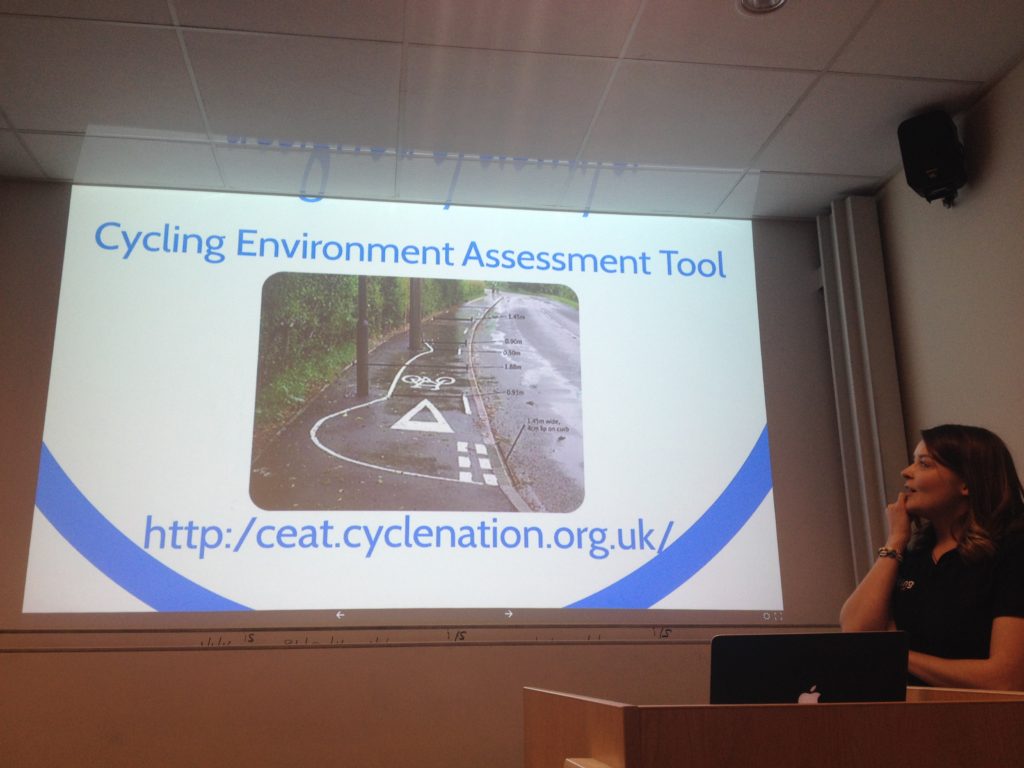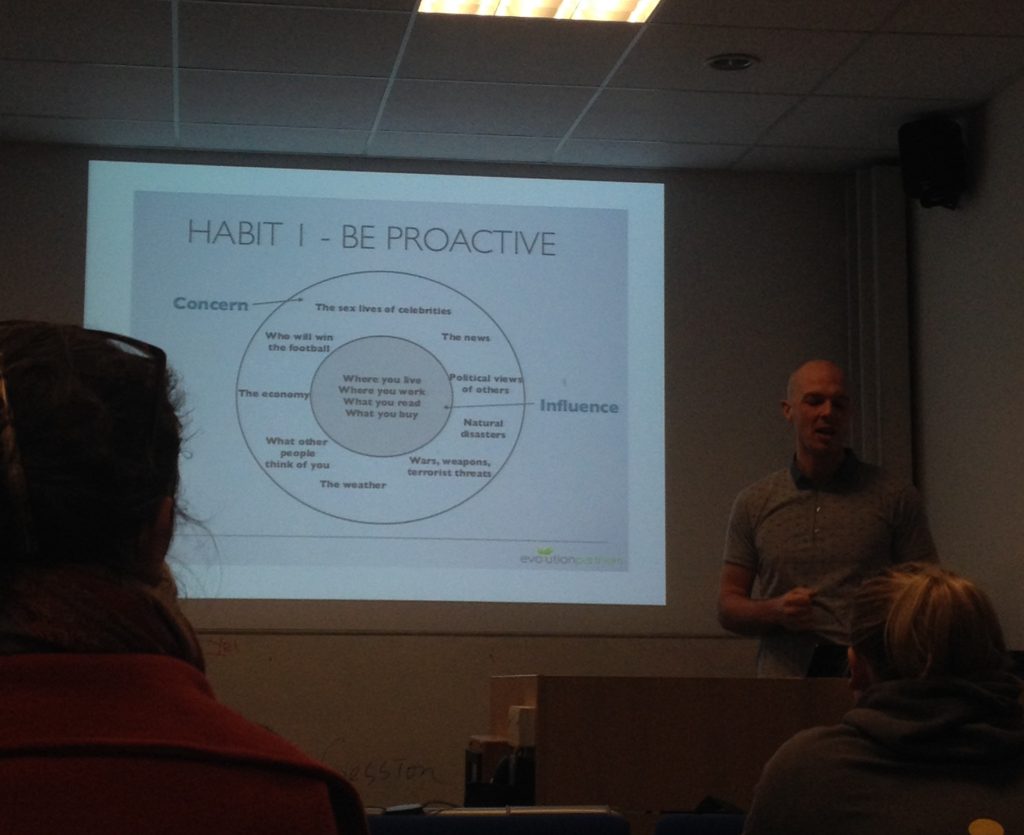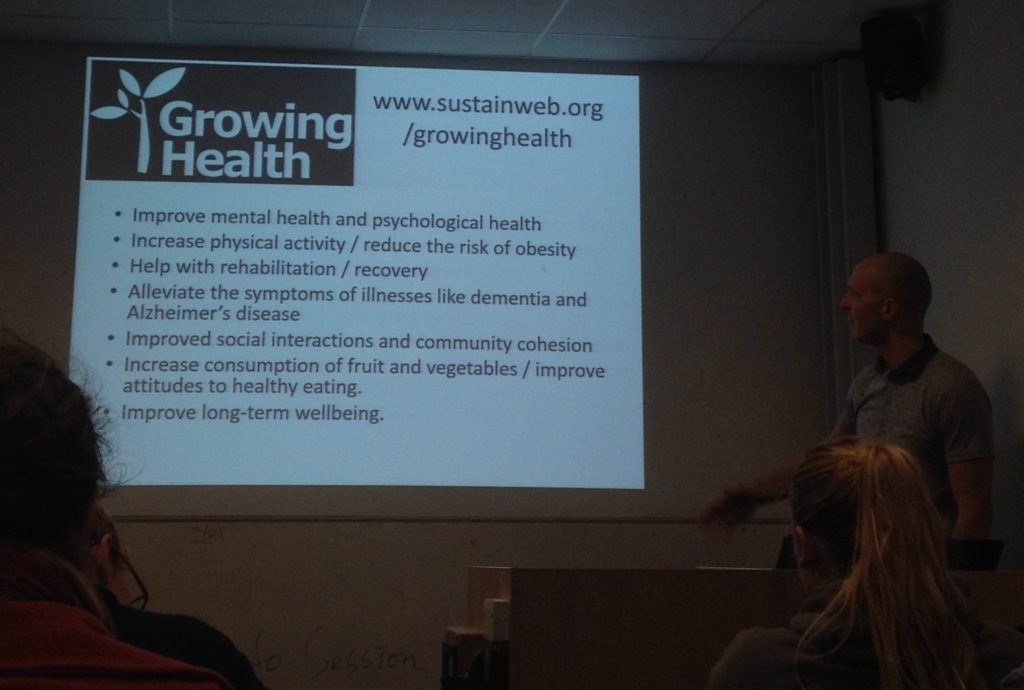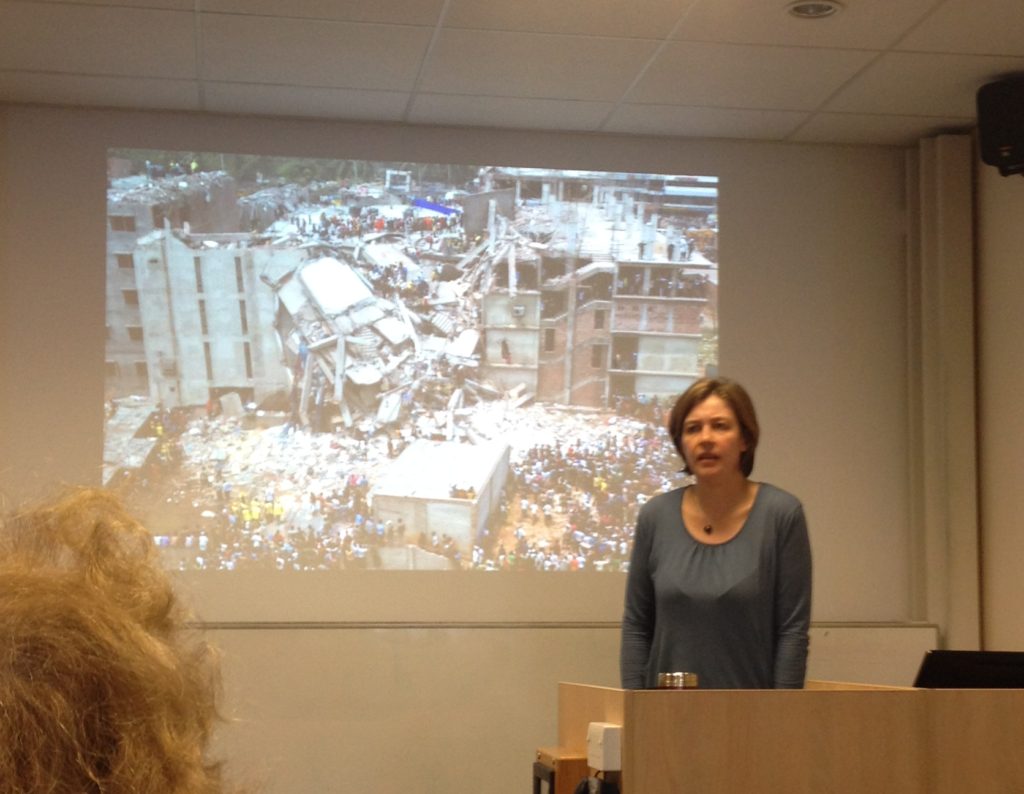On the 18th February 2017, I’ve attended and helped to promote the Sustainable Development Conference, hosted by the Southampton Hub and supported by the University of Southampton – very cool partnership – all created by students from different levels, undergrads, postgrads, PhDs, etc. It was a very good experience (I was a volunteer) and I’ve learnt so much that I would like to share with you. The conference had two themes at the same time: the sustainability and the international development. I was full time in the sustainability side and I will post some notes from my perceptions as a designer (and game designer) from the sustainable side of things – and how can we promote “small actions” to perform a “big impact”.
1. Community design
We live in a community – and this is not only about “society” itself; it is about local communities, people-oriented, people helping others, people making things – PEOPLE. As Seb Mayfield mentioned in his talk, sometimes we feel overwhelmed by the many actions we could take to be more sustainable, but the feeling that we are part of something bigger could help to decrease this “anxiety”. He mentioned about the Circle of Control and the Circle of Concern, in which we can influence people based on where we live, what we do, etc; instead of worrying too much about the natural disasters for example, which is something difficult to control. This shows that being part of a community makes sense and could reduce this “anxiety” of changing the world with just our hands. That is, looking at your surroundings can help you not to feel too overwhelmed.
The idea of community is a key aspect in sustainable living. For example, there is the Repair Cafe, organised here at Southampton, in which people can take their broken things and there will be people in this cafe that could help you to fix broken things: electronics, clothes, anything. In the cafe, people give advices if it’s worth repairing or throwing away. Also there are many activities involved. For example, sewing it’s another form of repairing. That is, knowledge is shared among the community and it becomes something like people helping people, giving value to the “social capital“. Food has also a big impact in communities.
Hearing about the Amazing Southampton repair cafe from Transitions Southampton #makedoandmend #sdc17 pic.twitter.com/bPID2fDWFv
— Emma Waight (@EmsWaight) February 18, 2017
Another example is from Friends of the Earth. They are working with schools in order to raise awareness about the Bee cause. Children grow many different flowers around their schools or hospitals. In the end is all about aesthetics and pollination! They also had a limited gardening for people recovering from stroke.
2. Tiny habits
We should be also thinking about doing small steps. Seb Mayfield said that it is good to grow our own food and in fact, growing our own food can bring many benefits to our mental health (see image below). Thus, growing our own food is more than just having a healthy diet. Seb mentioned that it gives us back “control” over our diet, over our body and over the environment. Thus, when we think about habits, we should start small, like growing pea shoots and in 4 weeks, it is possible to see the results!
Another thing to think: Did you know that even having a shower, you can be more sustainable? Choices of shampoo and even drying your hair could influence the environment. Soooo many things! In the talk about Eco Hair, shampoo choice and other things were very interesting to think. If we put in the paper, there are many things we can do for the environment and perhaps, the way advertising shows shampoo products and our habit of cleaning our hair might change. Sometimes, we learn from our parents – perhaps other lessons can be taught in that level.
3. Storytelling
The talk about Transition Southampton started with an important perspective about what it means to do a transition towards a sustainable life. For Clare and Angela, “Transition is about telling stories”. There were many concerns about clean air and super homes. For example, in the Super Home project, people can visit homes that are very sustainable and “green”, in order to feel more inspired. You can book to visit homes like that. Super cool. It is a way to tell stories about how people do things and feel inspired by them. In this Super Home project, people can also see the heat map from the homes to see if there is any heat coming from different parts of the house. Another example is the action of free books. TheTransition Southampton team showed that we can leave free books in different places like a train station for example – and people could help themselves to read while they commute. Simple as that! Storytelling can be also present in clothing. Do you know where your clothes are from? You might. But do you know ho made it? How was it made? No. Asking for information crucial! Products should tell these type of stories as well! Have a look at the Labour behind the Label website for more stories around clothing and fair working conditions.
In the talk from Friends of the Earth, Gill showed many examples of community engagement in schools. For example, they invited children to write post card for the world! They had in total 1600 postcards in the end and they’ve presented that in the London climate march. What a beautiful way to engage children and tell stories to the world. Gill also showed the example from Oswaldo bikes to Paris, using social media to raise awareness about the environment!
#Southampton Uni #SDC17 Gr8 small actions #NewForest @wwwfoecouk #Bee cause #peatfree #wildflowers #climatechange #ditchdiesel #Oswaldo owl pic.twitter.com/LKIzHAVIKy
— Gill Hickman (@Lussas) February 18, 2017
4. Designing Choices
The UK is still behind the Netherlands in terms of the use of bikes to commute or transport. As mentioned in the talk from Sustrans, 65% of people use cars for trips that are less than 5 miles. Another important message is that we need to first empower, then make people aware and then promote activities. That is, if there are no choices or if people can’t have access to the choices, then the action failed. See the photo below!

Seb Mayfield also mentioned that food poverty is not because of lack of food, it is how we are providing food. That is, things for us to think as people and communities on how do we grow our food and how do we share it. Also, it is possible to grow food everywhere. This guy here has built many vertical gardens! Thus, we can apply this to big cities as well. But I can imagine that in terms of design, this might be difficult. But in some cities they are already planting food on the top of buildings. It is like a combination of current possibilities with adaptations in order to become more sustainable. That is, we can do things in small spaces that would have a big impact.
5. Experience Design
Things should last longer than they do. This would increase the level of experience that people have with things and bring more value to them. In her talk, Dr. Emma Waight talked about being materialistic, in a way to value things and not replace them every time – things should last longer! And we might create more emotional links with things, giving them more value. This shows that experience design is key when looking for sustainable actions. What Emma said is that materialistic values are all about measurements: it’s all about more and we put responsibility on stuff. She also mentioned that second hand shopping is one example of people giving value to things that will last longer, but still the main reason why people buy it is because of the price. In the end, people buy second hand goods to save money. However, there is a movement towards vintage shopping as a style and people creating an identity around vintage look.
6. Calling people to action
Interestingly, in many of the actions showed in the talks, there is an element of “fun” and humour involved in the message. For example, in the talk from Sustrans, a campaign called for “Tax your thighs instead” and “Love handles”. Creativity here seems to be the strategy – together with fun aspects. I can see that there is room for a little bit of game actions here. The movement towards vintage shopping as a trend could be one way to call people for action. It is a way to combine sustainability with style or sustainability with identity. If we can send the message as identity through sustainability, perhaps it will last longer. People might adopt sustainability as a lifestyle and influence others around them. Another aspect to think about is clothing. When talking about fair conditions and fast fashion, Nicola from Labour Behind the Label mentioned that there is a lack of information and lack of transparency and we should ask brands to give more information. Also, we need to place more value in the clothes, instead of just changing our clothes because of fashion trends. Someone also said that we need to “Change the red carpet to the green carpet”! Why not? Another thing mentioned by Gill from Friends of the Earth is about showing signs around the campus or around places. She said that when there are eyes, people want to take the action! Signs need to be friendly!
Why do people buy second? For the enviornment, social impact, identity, and to be thrifty! #sdc17 pic.twitter.com/3HkZYIW0Nk
— Georgie Hannam (@GeorgieHannam) February 18, 2017
Imagine the amount of things that we can do! Each city has a different problem. In the case of Southampton, I believe that the issue is engaging more and more people to have a sustainable life. Many students from the University are here just for their courses and they don’t create a bond with the environment – sometimes it lacks of a link. It is our role as designers to not only engage these people but to also engage everyone around us. We can start small, design our own choices, plan properly our meals and transport, for example, and then help others. But as designers we also need to make sure that we empower people – we need to make the choices available. And then we need to make people more aware of the options. Can we redesign packages and add new information that was missing? Can we create games that will promote a conversation between people and brands? Can we promote games that are critical and will change people’s behaviour? Can we influence people’s habits by designing new choices? What can we do? Reflection time.



